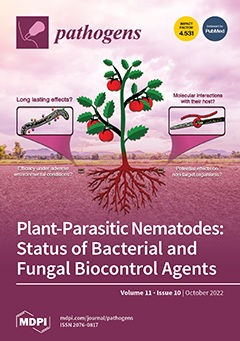Ver ítem
- xmlui.general.dspace_homeCentros Regionales y EEAsCentro Regional Santa FeEEA RafaelaArtículos científicosxmlui.ArtifactBrowser.ItemViewer.trail
- Inicio
- Centros Regionales y EEAs
- Centro Regional Santa Fe
- EEA Rafaela
- Artículos científicos
- Ver ítem
One health approach to identify research needs on Rhipicephalus microplus ticks in the Americas
Resumen
We aim to provide a harmonized view of the factors that affect the survival and promote the spread of R. microplus in the Neotropics, approaching its different facets of biology, ecology, distribution, and control. We review the interactions among environmental niche, landscape fragmentation, vegetal coverage (abiotic traits), and the biotic aspects of its ecology (abundance of domesticated or wild competent hosts), proposing emerging areas of research.
[ver mas...]
We aim to provide a harmonized view of the factors that affect the survival and promote the spread of R. microplus in the Neotropics, approaching its different facets of biology, ecology, distribution, and control. We review the interactions among environmental niche, landscape fragmentation, vegetal coverage (abiotic traits), and the biotic aspects of its ecology (abundance of domesticated or wild competent hosts), proposing emerging areas of research. We emphasize a holistic view integrating an economically and ecologically sustainable control of infestations and transmitted pathogens by R. microplus in the Neotropics. Examples of research link the trends of climate, the composition of the community of hosts, the landscape features, and a tailored management based on ecological grounds. Our view is that factors driving the spread of R. microplus are complex and deeply interrelated, something that has been seldom considered in control strategies. The effects of climate may affect the dynamics of wildlife or the landscape composition, promoting new patterns of seasonal activity of the tick, or its spread into currently free areas. In this paper we encourage a One Health approach highlighting the main aspects governing the components of the tick’s life cycle and its interactions with livestock and wild animals.
[Cerrar]

Autor
Estrada-Peña, Agustín;
Rodriguez Mallon, Alina;
Bermudez, Sergio;
Domingos, Ana;
Estrada Garcia, Mario Pablo;
Labruna, Marcelo B.;
Merino, Octavio;
Nava, Santiago;
Tarragona, Evelina Luisa;
Venzal, José Manuel;
de La Fuente, José;
Mosqueda, Juan;
Lleonart Cruz, Ricardo;
Fuente
Pathogens 11 (10) : 1180 (October 2022)
Fecha
2022-10
Editorial
MDPI
ISSN
2076-0817 (electronic)
Documentos Relacionados
Formato
pdf
Tipo de documento
artículo
Proyectos
(ver más)
INTA/2019-PE-E5-I109-001/2019-PE-E5-I109-001/AR./Convocatoria: Estudios para el control de enfermedades subtropicales y/o transmitidas por vectores (Tristeza Bovina, Garrapatas, Miasis, Tripanosomiasis, Lengua Azul y la
Palabras Claves
Derechos de acceso
Abierto
 Excepto donde se diga explicitamente, este item se publica bajo la siguiente descripción: Creative Commons Attribution-NonCommercial-ShareAlike 2.5 Unported (CC BY-NC-SA 2.5)
Excepto donde se diga explicitamente, este item se publica bajo la siguiente descripción: Creative Commons Attribution-NonCommercial-ShareAlike 2.5 Unported (CC BY-NC-SA 2.5)


